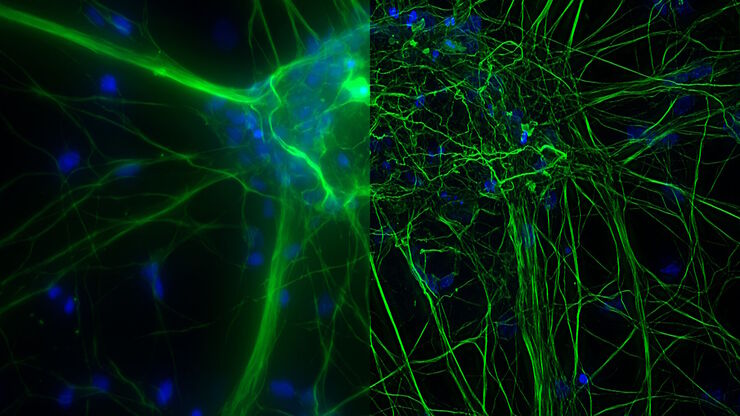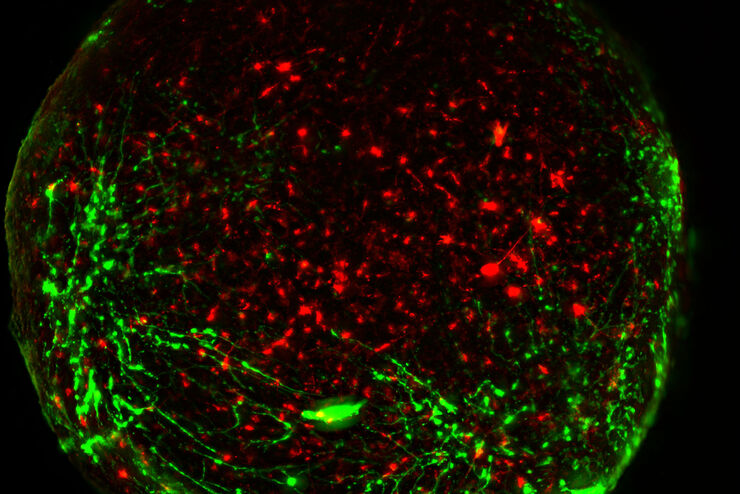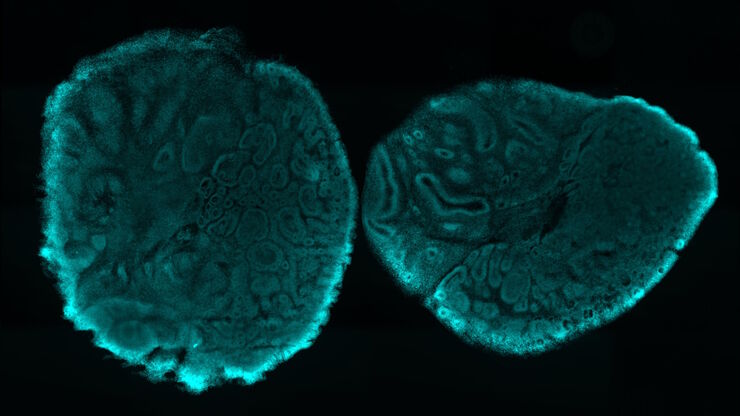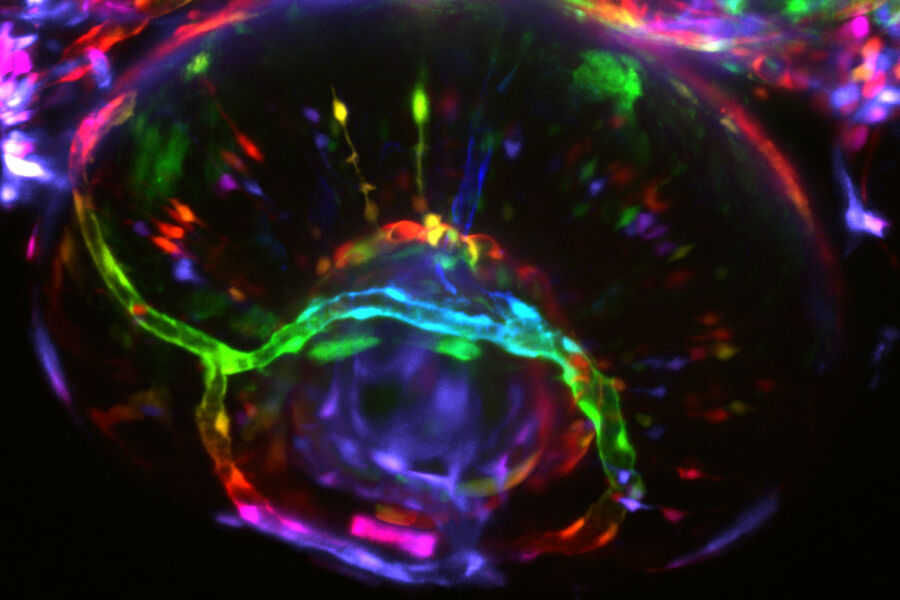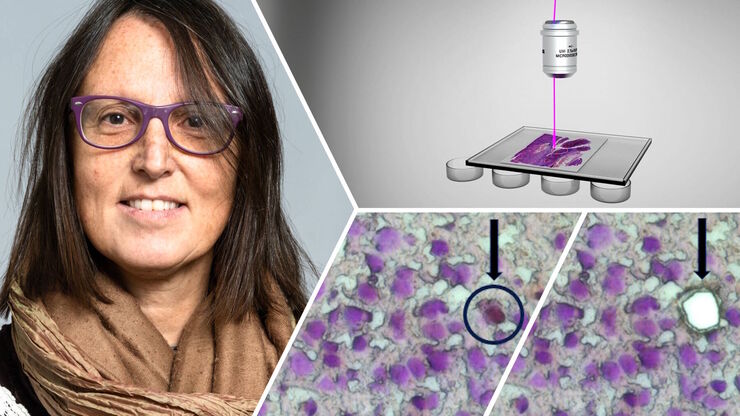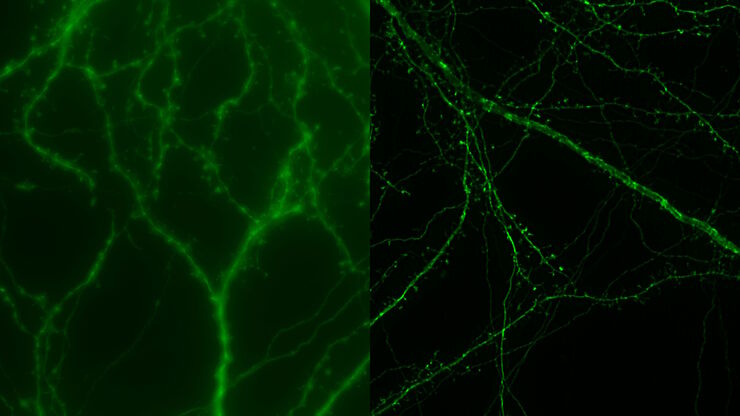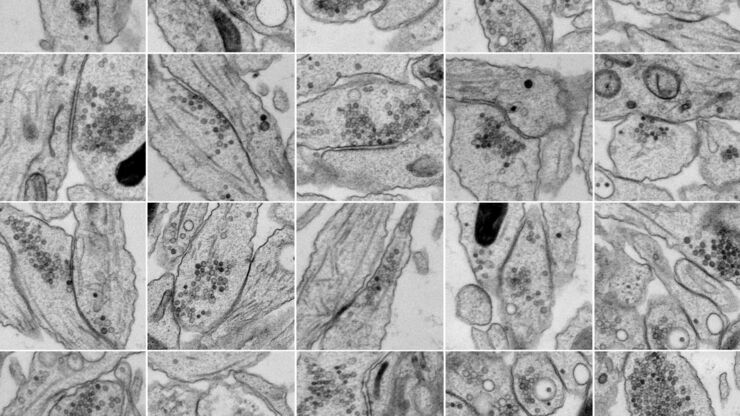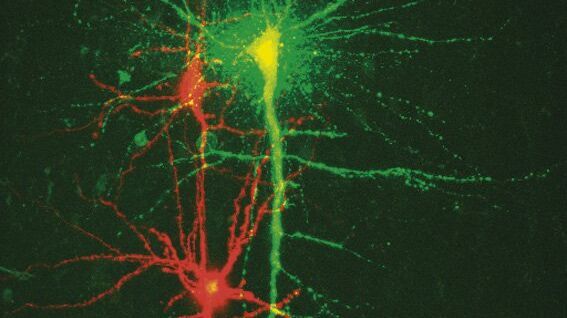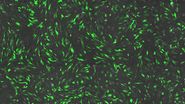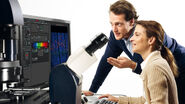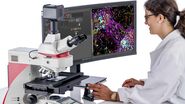신경과학 연구 분야의 이미징 문제
신경 시스템을 연구하려면 종종 고해상도, 심층 이미징 및 대형 절편의 시각화를 조합해야 합니다. 또한 살아있는 세포, 조직, 오가노이드 및 모델 유기체와 같은 다양한 유형의 샘플을 이미지화할 수 있는 유연성도 필요합니다.
세포 운반이나 시냅스 리모델링과 같은 신속한 동적 과정에 관한 연구에는 고속 현미경이 필요합니다. 고속 현미경의 주요 과제 중 하나는 형광 포화를 피하면서 고해상도 이미지를 촬영해야 한다는 것입니다.
신경과학 연구는 종종 광역 및 체적 이미징을 포함합니다. 형광 산란과 배경 신호를 줄여야 한다는 필요성 때문에 높은 콘트라스트와 해상도로 이미지를 촬영하는 것이 어려워질 수 있는데, 이는 특히 뇌 절편과 같이 밀집된 조직의 뉴런 구조를 검사할 때 매우 중요합니다.
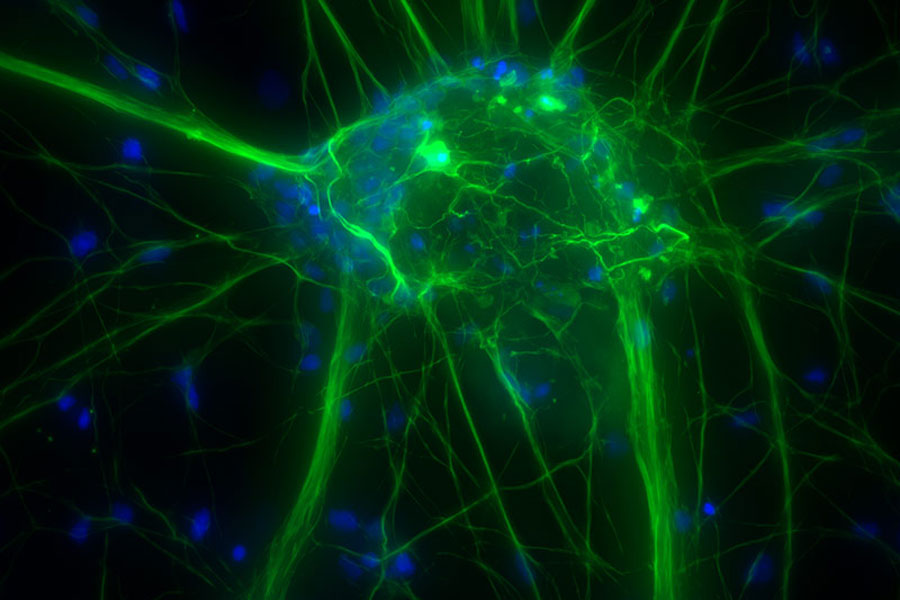
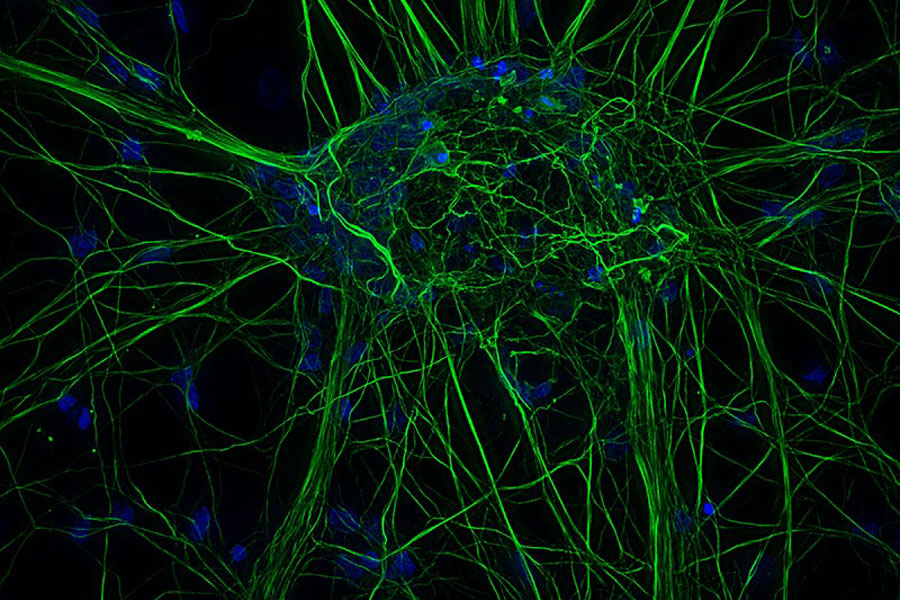
배양된 피질 뉴런입니다. 평면 59개의 Z-stack(두께: 21µm). 샘플 제공: FAN GmbH, Magdeburg, Germany.
관련 문서
What are the Challenges in Neuroscience Microscopy?
Neuroscience Images
How do Cells Talk to Each Other During Neurodevelopment?
Imaging Organoid Models to Investigate Brain Health
신경과학 연구를 위한 현미경 방식
신경계에 대한 연구는 일반적으로 이벤트 및 구조의 고해상도 이미징을 위해 공초점 현미경에 의존합니다. 더 깊은 체내 이미징을 위해서는 다광자 현미경을 사용합니다. 근적외선 여기 광을 사용하는 기능으로 빛의 산란을 감소시켜, 최소의 침입성으로 깊은 이미징을 가능하게 하기 때문입니다. LightSheet 현미경 또한 광민감 샘플이나 3D 샘플에 선호됩니다. 이는 고유한 광학 단면 절편과 3D 이미징을 제공하면서 광독성을 줄입니다.
- 광유전학은 빛을 이용해 신경 활동을 제어하는 기술을 말하며 이를 사용해 특정 신경망과 세포 신호를 연구할 수 있습니다. 이 방식에는 신경 세포막에 있는 광민감 단백질의 발현이 필요합니다. 광유전학을 밀리세컨드의 정밀 유리화와 결합하여 나노 단위로 이벤트를 탐색하는 것은 동적 과정 내에서 특정 시점을 연구할 수 있는 유망한 기술입니다.
- 전기생리학은 조직과 세포의 전기적 특성에 대한 연구로, 뉴런의 전기적 특성에 대한 연구를 포함합니다. 신경과 근육 세포의 기능은 이온 채널을 통해 흐르는 이온 전류에 의존합니다. 이온 채널을 조사하는 한 가지 방법은 패치 클램핑을 사용하는 것입니다. 이 방법을 사용하면 이온 채널을 자세히 조사하고 뉴런처럼 주로 흥분할 수 있는 세포들을 비롯한 다양한 종류의 세포들의 전기 활동을 기록할 수 있습니다.



